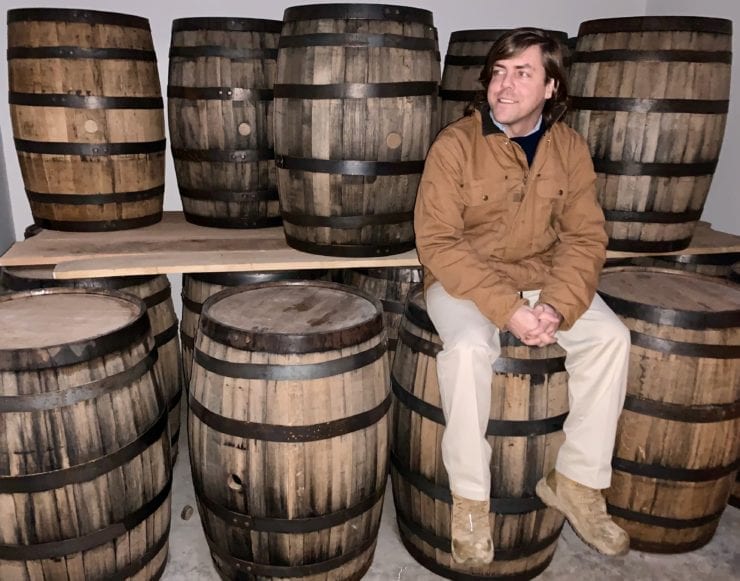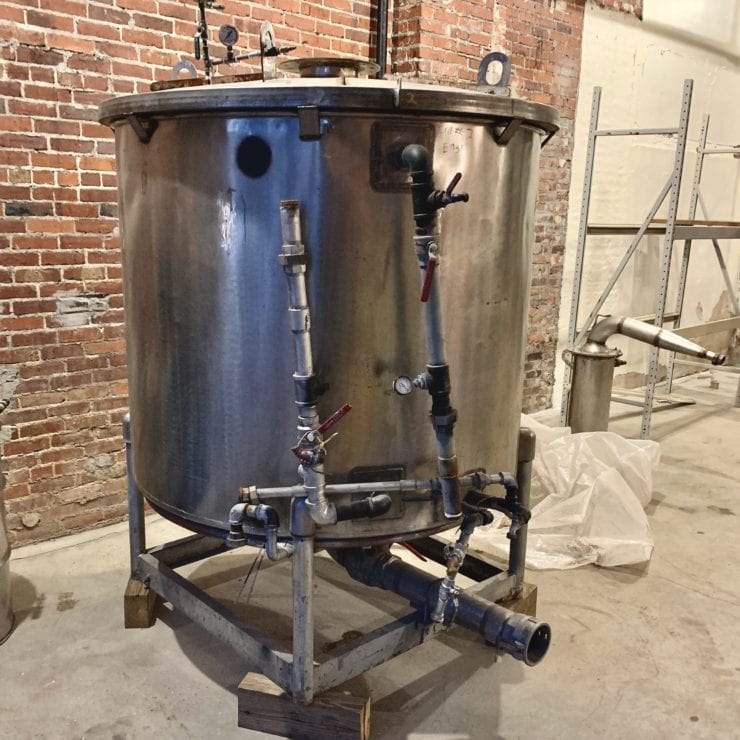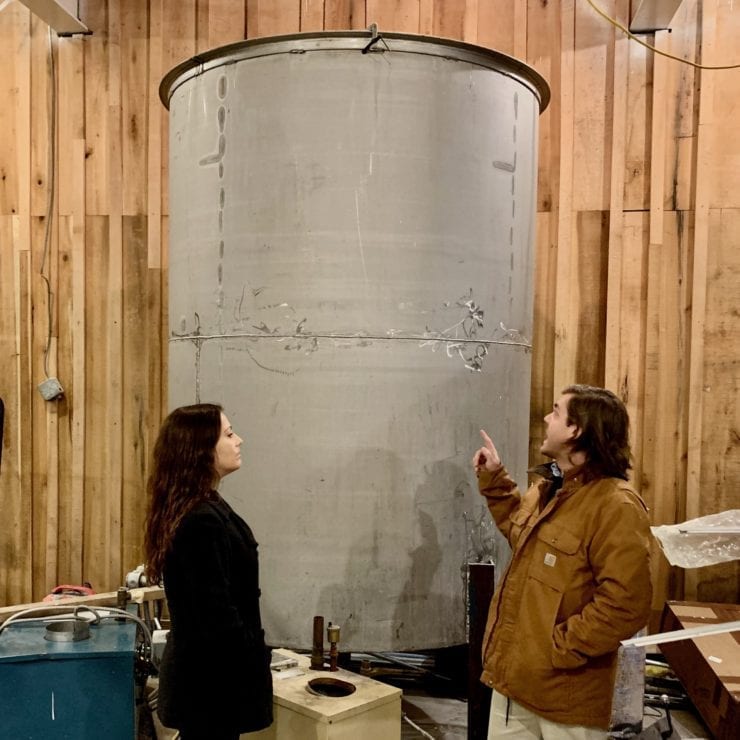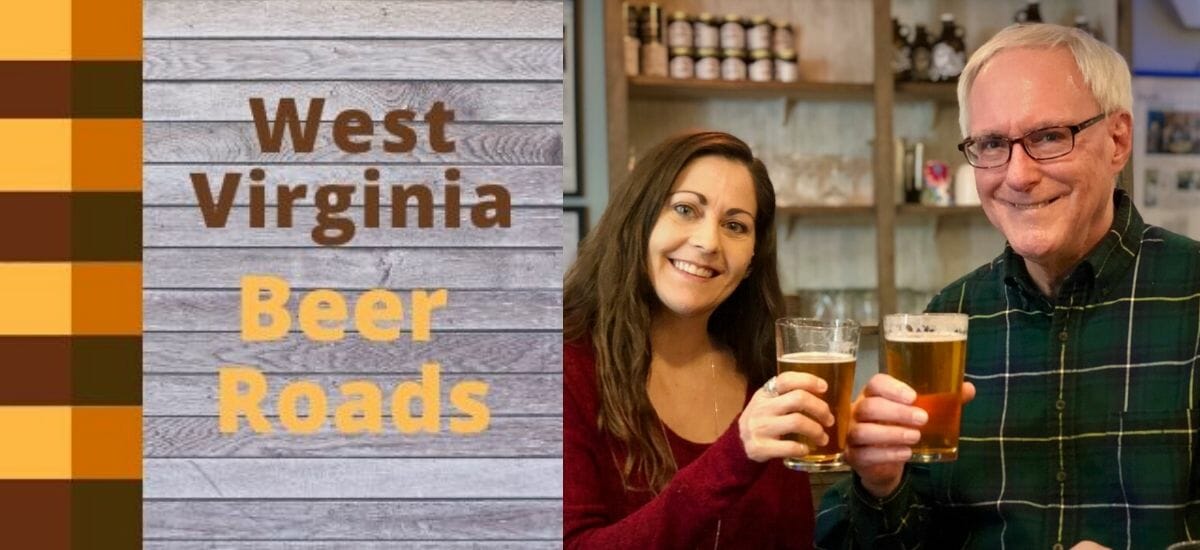
Bullock Distillery project in Charleston enters final build-out phase
December 23, 2019
Charleston will soon have a second distillery operating inside city limits. The Bullock Distillery, a project led by father and son team John and Tighe Bullock, looks forward to beginning distilling in early 2020. It promises be a place that boosts the area by producing quality products made largely with locally-sourced ingredients.
“There’s always a good demand for quality products” says Tighe Bullock. “That’s what we intend to go for. No frills, no gimmicks. Just a really good quality product.”

Tighe Bullock, chief operating officer of Bullock Distillery, took a bit of a circuitous route to this distillery project. Professionally, Tighe is an accountant and a lawyer by training and a real estate developer and construction contractor by experience. Working with his father, who is a professional engineer, they invested in a bunch of real estate in Charleston’s near-West Side, now a redevelopment-targeted zone marketed as Elk City. Over the years, the men began fixing up properties and filling them with tenants. Somewhere along the way, they decided that one of the buildings they purchased would be the perfect place to put a small, urban distillery.
The family had a history in the alcohol business going back several generations to John Bullock’s North Carolina ancestors, but neither John or Tighe had any experience with distilling, other than enjoying a good whiskey. The more they thought about it, though, the more they became convinced that a mini-distillery would be a great addition to the urban renewal plans for the Elk City neighborhood.
Their market research consisted of visiting many other small distilleries in West Virginia and other states in our region. “We met some great people along the way,”Tighe said. The success of these businesses helped get the Bullocks excited about the possibilities and also helped them understand the challenges and potential pitfalls.

A DIY distillery takes time
The project has been a while in the making and things have progressed slowly since word started circulating about the project back in early 2018. The initial Charleston zoning board approval came in May 2018, and following that they began a serious effort to get the construction moving. The Bullocks decided to do most every part of the development themselves, which includes remodeling the building and even fabricating much of the distillery equipment they will use.
“We’ve kind of bootstrapped it,” Tighe says. “A lot of Craig’s List, running around to different states picking up this and that.”
While they did purchase an old 500-gallon pot still from the former West Virginia Distilling Company in Morgantown, which had closed, two other stills and most of the stainless steel tanks they need are being fabricated on site. This do-it-yourself manufacturing is definitely taking them longer to finish, but they are having fun and getting lots of satisfaction doing it. It’s something they maybe couldn’t have done if it were not for assistance from the Robert C. Byrd Institute. RCBI helped with the design of the stills and developing the specialized welding skills necessary to construct the equipment. The Bullocks were happy to get the help.

Originally, the Bullocks optimistically hoped to have distilled spirits production up and running a year ago. Now, they look forward to a start-up in the first quarter of 2020. Once the build-out is completed and final permits issued, the distillery will operate a pot still for making whiskey and two column stills for the production of neutral spirits used in gin and vodka.
They will establish a barrel aging program and plan to age their whiskey for two, five, or more years in oak. For bourbon, only brand new, charred oak barrels can be used. A while back, they bought a set of 48 new, medium-char oak barrels with some help from the WV Chemical Alliance Zone, a local business assistance and promotion organization. Previously used barrels will utilized for spirit products other than bourbon and similar that requires new barrels. The gin and vodka and any other clear spirits can be bottled and sold without aging.
While the total distillery investment is still a moving target, Tighe estimates they will be putting in somewhere over $500,000 in the project to get it open.

Product line in development
Once in full operation, their product line will include vodka, gin, bourbon, other whiskeys, and possibly more. All the details have not yet been fully decided. Whatever the final product mix includes, they plan to focus on the use of local ingredients, like corn and grains for their whiskey and local potatoes for their vodka. The Bullocks even plan to use ground water sourced from property they own in Greenbrier County.
Pricing will be set once the final decisions on product are made. “We think things will be on the higher end, but not unaffordable,” Tighe says. “And of course the quality has to match the price.”
One big positive of the company is that the owners have very little debt associated with the distillery. “We’ve found that debt and cash flow can often times influence the product and quality of the product you are making,” Tighe says. “We’re going to be focused on making the highest quality product that we can, rather than coming into cash flows as soon as we can.”
The front section of the distillery building will house a spacious tasting room and store with its entrance on Washington St. West. The Bullocks are not certain when they will open the tasting room. The tasting room probably can’t open at exactly the same time as the distillery gets its production started. They first need to have sufficient product made and bottled, and that will take a little time following the distillery’s start-up.
Bullock Distillery, a family affair
Tighe says that he, his father, and a cousin will initially handle the distilling chores. They plan to hire two additional people to work in the production side and, later, more in the sales side. Once the place is fully operational with the store and tasting room open, he expects the business will have about six employees in addition to family.
They also plan to put their product into distribution, so it can be sold in liquor stores and bars. Logo, brand names, bottle styles, and label art are all in the works, but not yet decided, Tighe says. His sister, who is a graphic design artist, is working on those projects.
Total annual production
Tighe expects their first year’s production will be in the 5,000 proof gallons range and grow to 10,000 proof gallons¹ over the next couple of years. Ten thousand proof gallons of spirits would roughly translate into a little over 50,000 750-ml bottles of 100 proof liquor. West Virginia’s mini-distillery law allows for production of a maximum of 20,000 proof gallons per year. Above that amount, you must obtain a regular distillery license, which comes at a higher cost.
Follow the distillery’s Facebook page for updates on the grand opening.
¹ A proof gallon is a legally defined term meaning a gallon of liquid which contains 50 percent by volume of ethyl alcohol. Distilled spirits containing higher or lower percentages of ethyl alcohol are converted to standard proof gallons to calculate a distillery’s output volume number.

Entire interview on the podcast.


One comment on “Bullock Distillery project in Charleston enters final build-out phase”
Mark
December 23, 2019 at 11:10 amGreat info Charles! Those guys are real local folk. I can’t say how much I appreciate them and the effort as well as dollars they are investing in the area.